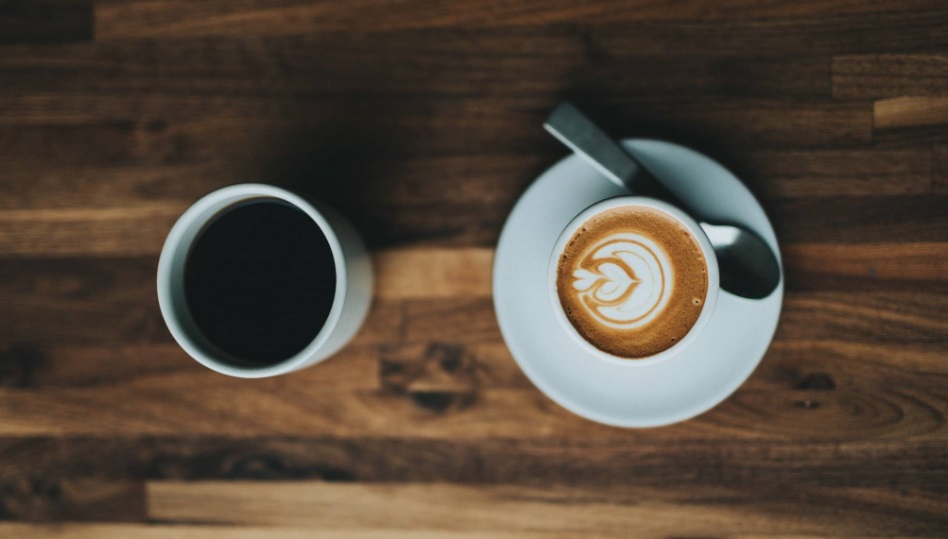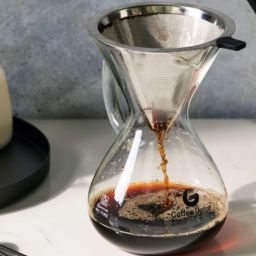
Exploring the world of coffee, two styles stand out for their popularity and distinctive brewing methods: espresso and drip coffee. Caffeine in espresso vs drip coffee varies significantly, not just in quantity but in the brewing approach itself. Espresso is known for its quick, pressurized brewing method, which extracts rich flavors and caffeine from finely ground coffee packed into a compact puck.
On the other hand, drip coffee utilizes a slower process where hot water filters through coarser grounds, typically resulting in a longer brewing time and a milder flavor profile. Each method offers a unique coffee experience, catering to different preferences and situations.
Key Takeaways
- Caffeine Concentration vs. Serving Size: While espresso boasts a higher concentration of caffeine per ounce, it is generally served in much smaller amounts. In contrast, a typical serving of drip coffee, being larger, contains more total caffeine, affecting its overall stimulant effect.
- Sustained Impact: The larger volume of drip coffee provides a more prolonged caffeine release, which many find beneficial for extended energy throughout the day.
- Personal Preference: Choosing between espresso and drip coffee often boils down to personal taste. Some prefer the intense, quick hit of espresso, while others favor the gradual enjoyment and milder taste of drip coffee.
Caffeine Content Comparison
When diving into the details of caffeine content in espresso and drip coffee, it’s clear that both beverages serve distinct profiles suited to different caffeine preferences. Espresso, known for its potency, typically features about 30-50 mg of caffeine per 1-ounce shot. In contrast, drip coffee provides approximately 65-120 mg of caffeine per 8-ounce serving, making it less concentrated but higher in total caffeine due to the larger serving size.
The brewing time, grind size, and water temperature are crucial factors that influence the caffeine content in both types of coffee. Espresso is brewed quickly, usually in 20-30 seconds, using very fine coffee grounds and water at high pressure. This rapid extraction process pulls a concentrated amount of caffeine and flavor from the beans but limits the total volume of the drink.
On the other hand, drip coffee is brewed more slowly, typically taking several minutes as hot water filters through coarser grounds by gravity. This extended contact time allows more caffeine to be extracted over the brew period. The grind size for drip coffee is larger, which suits its slower extraction process, preventing over-extraction and bitterness that can occur with too fine a grind used over a long period.
Water temperature also plays a vital role. Ideally, water should be just off the boil (about 195°F to 205°F) to optimize caffeine extraction without degrading the coffee’s flavor. Too hot, and the coffee can become overly bitter; too cool, and it might be under-extracted, leading to a flat, underwhelming cup.
Brewing Techniques
Espresso and drip coffee are crafted with distinct brewing techniques, each requiring specific skills and equipment. Brewing espresso involves using a high-pressure espresso machine that forces hot water through finely ground coffee. This method extracts a concentrated, flavorful shot in about 20-30 seconds. The key requirements include an espresso machine, a precise grind, and skills in tamping the coffee properly to ensure even water distribution through the grounds.
Drip coffee, on the other hand, is made by dripping hot water over medium to coarse ground coffee, which is contained in a filter. The water extracts the coffee as it passes through the grounds and drips into a carafe or pot. This method is generally more forgiving and requires basic coffee-making equipment like a drip coffee maker or a pour-over setup. It does not demand the same level of precision as espresso, making it more accessible for everyday brewing at home.
Both methods have their intricacies. Espresso requires a bit more technical skill and understanding of how factors like pressure and grind size affect the end result. Drip coffee brewing offers a simpler, straightforward process but still leaves room for experimentation with grind size and water temperature to tweak the flavor.
Flavor Profiles and Aromatics
The brewing methods of espresso and drip coffee not only affect their caffeine content but also their flavor profiles and aromatic qualities. Espresso is renowned for its intense, robust flavor accompanied by a rich crema that adds a creamy texture. Its aromatic profile is potent due to the high pressure of brewing, which enhances the extraction of aromatic oils and volatile compounds.
Drip coffee tends to have a lighter, cleaner taste with more subtle aromatic nuances. The slower brewing process allows for a gradual extraction, which can highlight more nuanced flavors in the coffee, depending on the beans and roast used. This method is often preferred by those who enjoy savoring the individual notes and complexity that coffee can offer.
Health Implications and Antioxidants
Both espresso and drip coffee are rich in antioxidants and offer several health benefits, though their concentrations and the types of compounds they contain can vary due to different brewing methods. Espresso, with its concentrated extraction, tends to have a higher level of antioxidants per ounce compared to drip coffee. This is because the quick, high-pressure brewing of espresso retains more of the natural antioxidants found in coffee beans. These antioxidants, such as chlorogenic acids, are known for their anti-inflammatory and heart health benefits.
Drip coffee, though less concentrated, still offers a significant amount of antioxidants. The longer brewing time allows for a different range of compounds to be extracted, which can include a varied profile of antioxidants. Regular consumption of drip coffee has been linked to a reduced risk of several chronic diseases, including Parkinson’s disease and type 2 diabetes. Both types of coffee also contain essential nutrients like magnesium, potassium, and niacin, contributing to their overall health benefits.
Versatility and Usage
Espresso and drip coffee serve as versatile bases for a wide range of beverages, each allowing for creative and varied drink recipes. Espresso is incredibly versatile in the coffee shop setting; it is the foundation for drinks like lattes, cappuccinos, macchiatos, and Americanos. Its strong flavor and creamy texture make it ideal for shorter, flavor-intense drinks often enjoyed throughout the day.
Drip coffee, while typically enjoyed black or with a bit of milk, also serves as the base for other popular preparations like iced coffee and French press. Its milder flavor profile makes it a favorite for larger, more leisurely consumed beverages and can be easily adapted for sweet or flavored variations like vanilla or hazelnut infused coffees.
FAQs
How does the caffeine strength differ between espresso and drip coffee?
Espresso tends to have a higher caffeine concentration per ounce compared to drip coffee. However, because espresso servings are much smaller (typically around 1 ounce), a standard cup of drip coffee (usually around 8 ounces) will have more total caffeine.
Why might someone prefer espresso over drip coffee, or vice versa?
The preference often comes down to the flavor intensity and the drinking experience. Espresso is favored for its strong, concentrated flavor and creamy texture, ideal for those who enjoy a quick, potent coffee hit. Drip coffee is generally preferred for its milder taste and prolonged caffeine release, making it suitable for leisurely drinking or those who prefer a less intense coffee experience.
How much espresso equals the caffeine in drip coffee?
Generally, one standard shot of espresso might have less total caffeine than a full cup of drip coffee. To match the caffeine content of an 8-ounce cup of drip coffee, you would need about 2 to 3 shots of espresso, depending on the specific brews and bean types used.
Final Thoughts
In exploring Caffeine in Espresso vs Drip Coffee, we’ve seen that each brew offers unique benefits tailored to different preferences. Espresso delivers a robust, flavorful experience in a compact form, while drip coffee provides a gentler, sustained caffeine effect over a longer period. Ultimately, the choice between espresso and drip coffee hinges on personal taste and caffeine needs.









